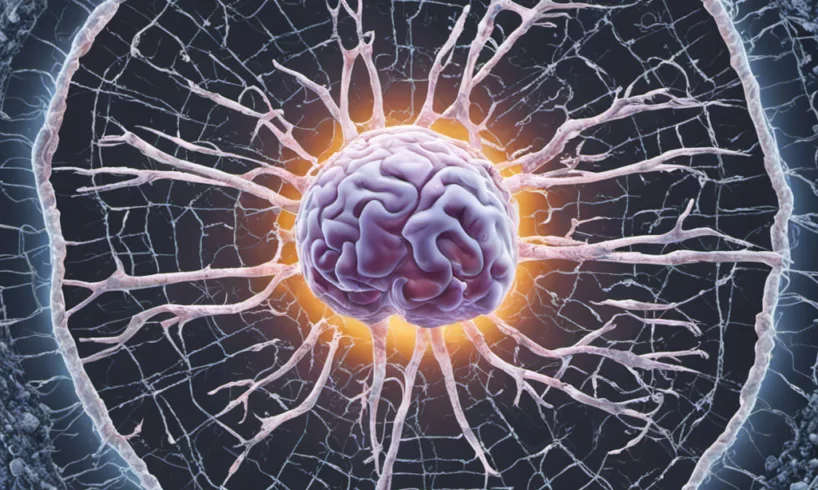
Groundbreaking Research from UT Southwestern and UT Dallas Unveils a Novel Approach to Breach the Blood-Brain Barrier and Target Brain Tumors
A collaboration between researchers from UT Southwestern Medical Center and UT Dallas has led to a promising discovery that could revolutionize the treatment of glioblastoma, the most common and aggressive primary brain tumor. The ground-breaking study, recently published in Nature Communications, reveals how the integration of nanotechnology with a common chemotherapy drug can potentially breach the blood-brain barrier (BBB), leading to a significant increase in the survival rate of glioblastoma in mouse models.
The Stubborn Barrier
Glioblastoma, notorious for its resistance towards treatment, has remained a formidable challenge for medical professionals. The primary obstacle lies in the BBB, a protective layer that prevents potentially harmful substances, including chemotherapy drugs, from entering the brain. Consequently, the vast majority of chemotherapy drugs, although effective in petri dishes, are unable to reach glioblastoma cells in patients and animal models.
The Nanotech Solution
In their innovative study, the researchers introduced gold nanoparticles coated with antibodies against a key protein in the BBB complex, a strategy dubbed optoBBTB. When these nanoparticles are injected intravenously, they attach to the tight junction proteins of the BBB. A specific wavelength of laser light then causes these nanoparticles to vibrate, opening the BBB without generating heat or causing damage.
Testing the Approach
The researchers tested this approach using two types of genetically engineered mice that mimic key features of human glioblastoma. After the delivery of optoBBTB, a dye was injected which successfully infiltrated the animals' tumors, indicating a successful breach of the BBB.
A Leap in Survival Rates
The team then combined this approach with the chemotherapy drug paclitaxel, commonly used in various cancer treatments. Following three cycles of treatment, the tumors in the mouse models shrank up to sevenfold, and the mice lived up to 50% longer compared to those that received intravenous Taxol or a placebo.
Future Implications
While the increase in survival rates is significant, the researchers believe the real promise of optoBBTB lies in its potential to enable a variety of other promising chemotherapy drugs to be used on the brain, 98% of which currently cannot cross the BBB.
Conclusion: This pioneering study, funded by various esteemed institutions including the Cancer Prevention and Research Institute of Texas and the Department of Defense, has opened a new frontier in the fight against glioblastoma. The innovative combination of nanotechnology and chemotherapy holds immense potential to transform the treatment landscape for this aggressive brain tumor. However, while the results are promising, further research is needed to validate the effectiveness and safety of this approach in humans. This breakthrough nonetheless underscores the power of interdisciplinary collaboration in driving medical advancements and offers a glimmer of hope to those battling glioblastoma.

George Smith, with over a decade in tech journalism, excels in breaking down emerging tech trends. His work, spanning tech blogs and print, combines in-depth analysis with clarity, appealing to a wide readership. George's pieces often explore technology's societal impact, showcasing his foresight in industry trends.







